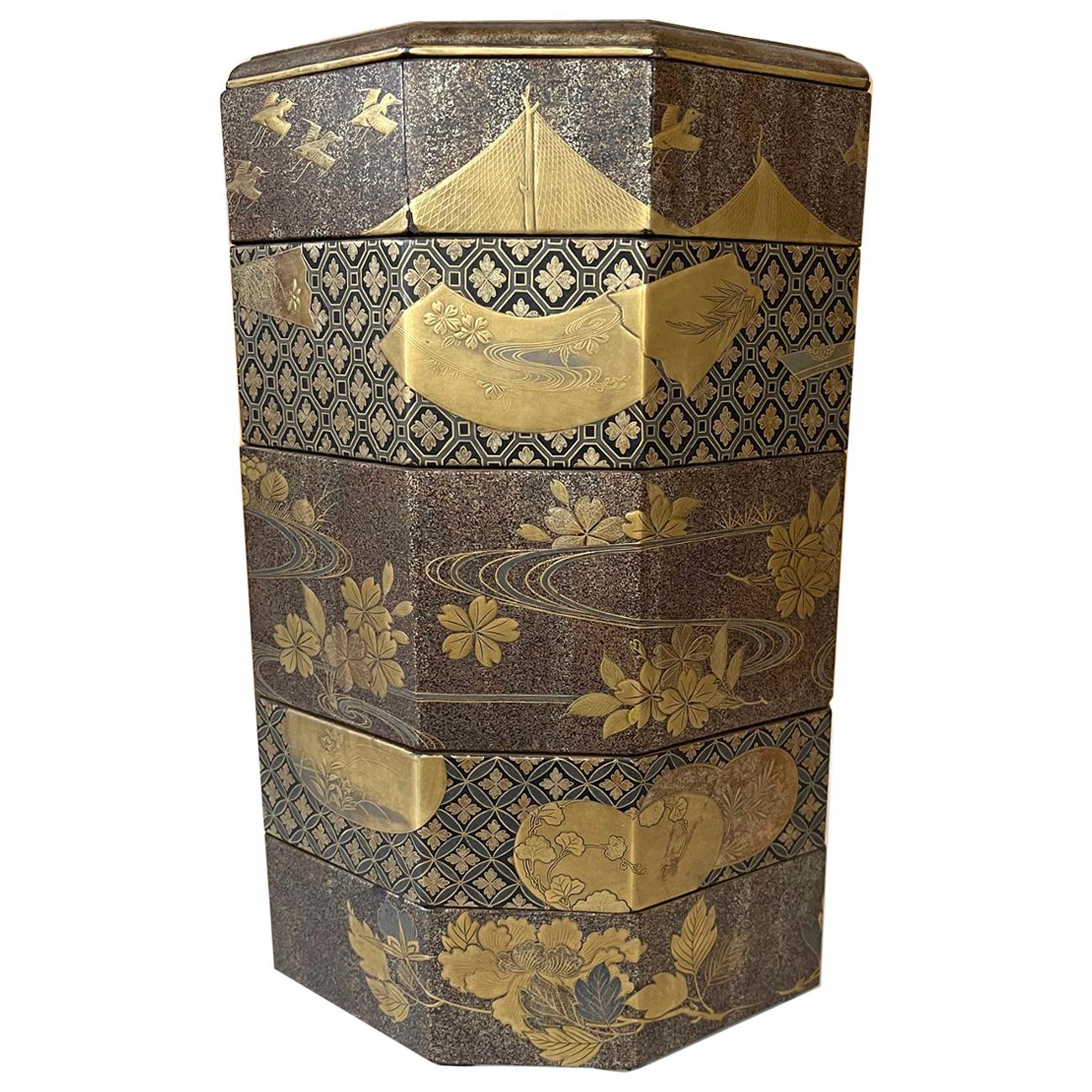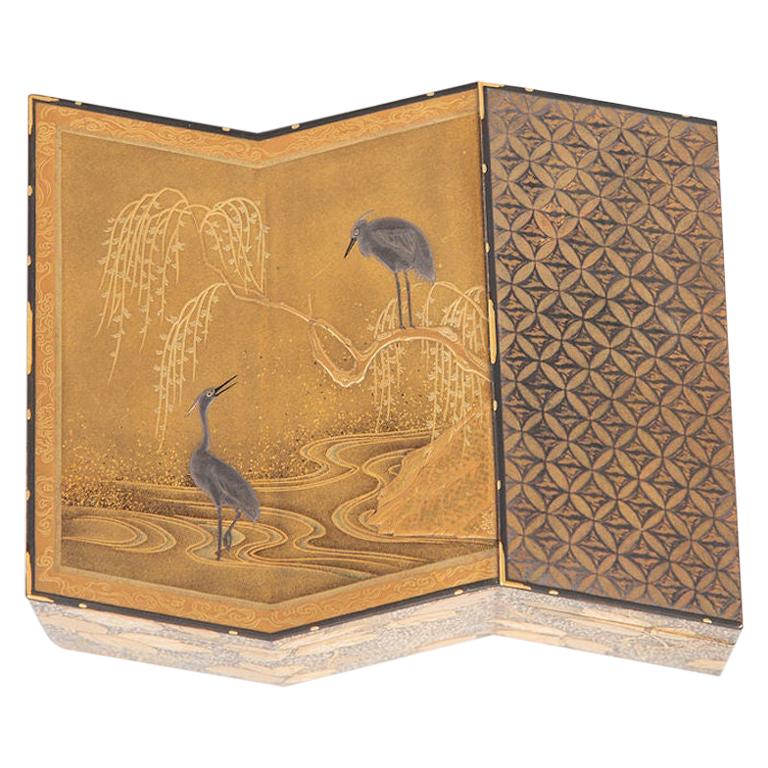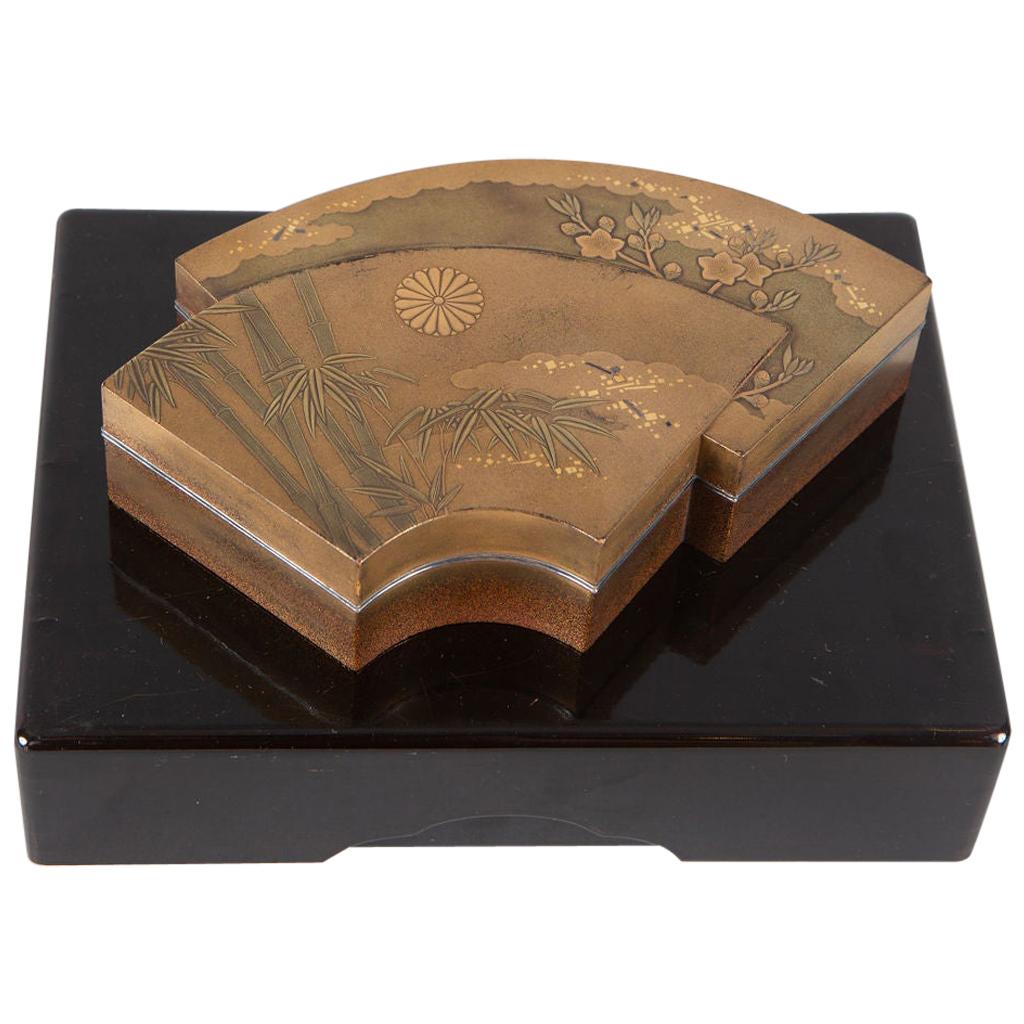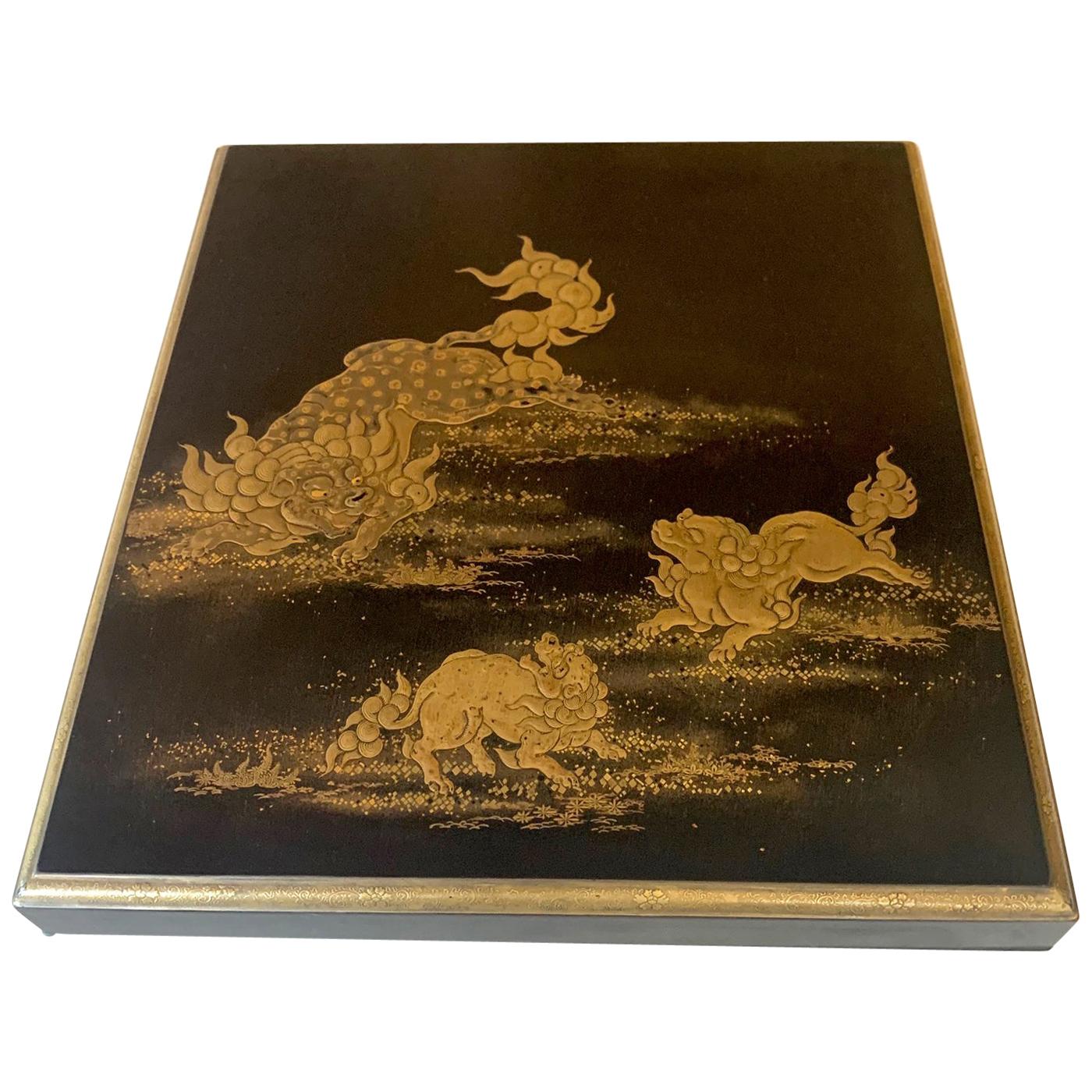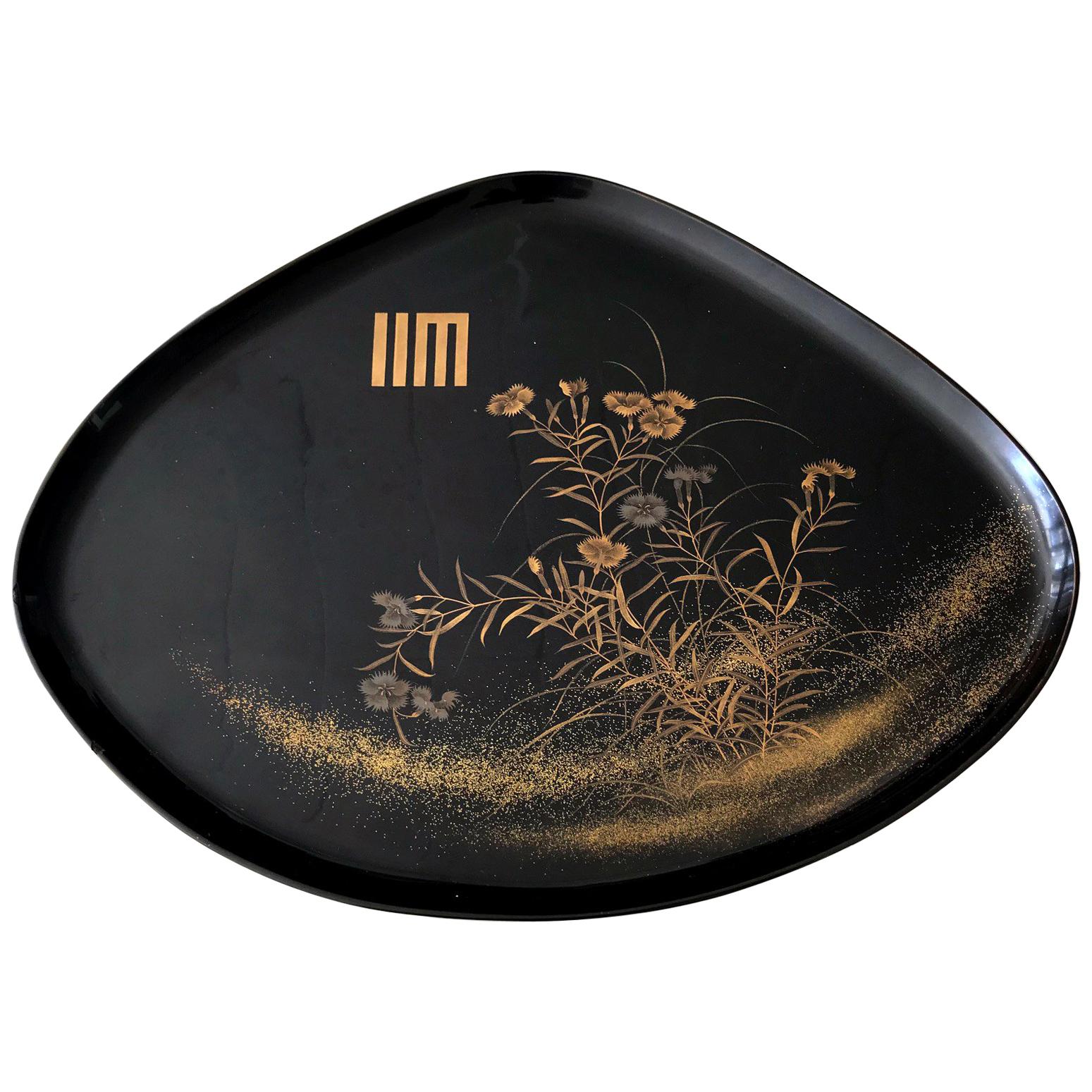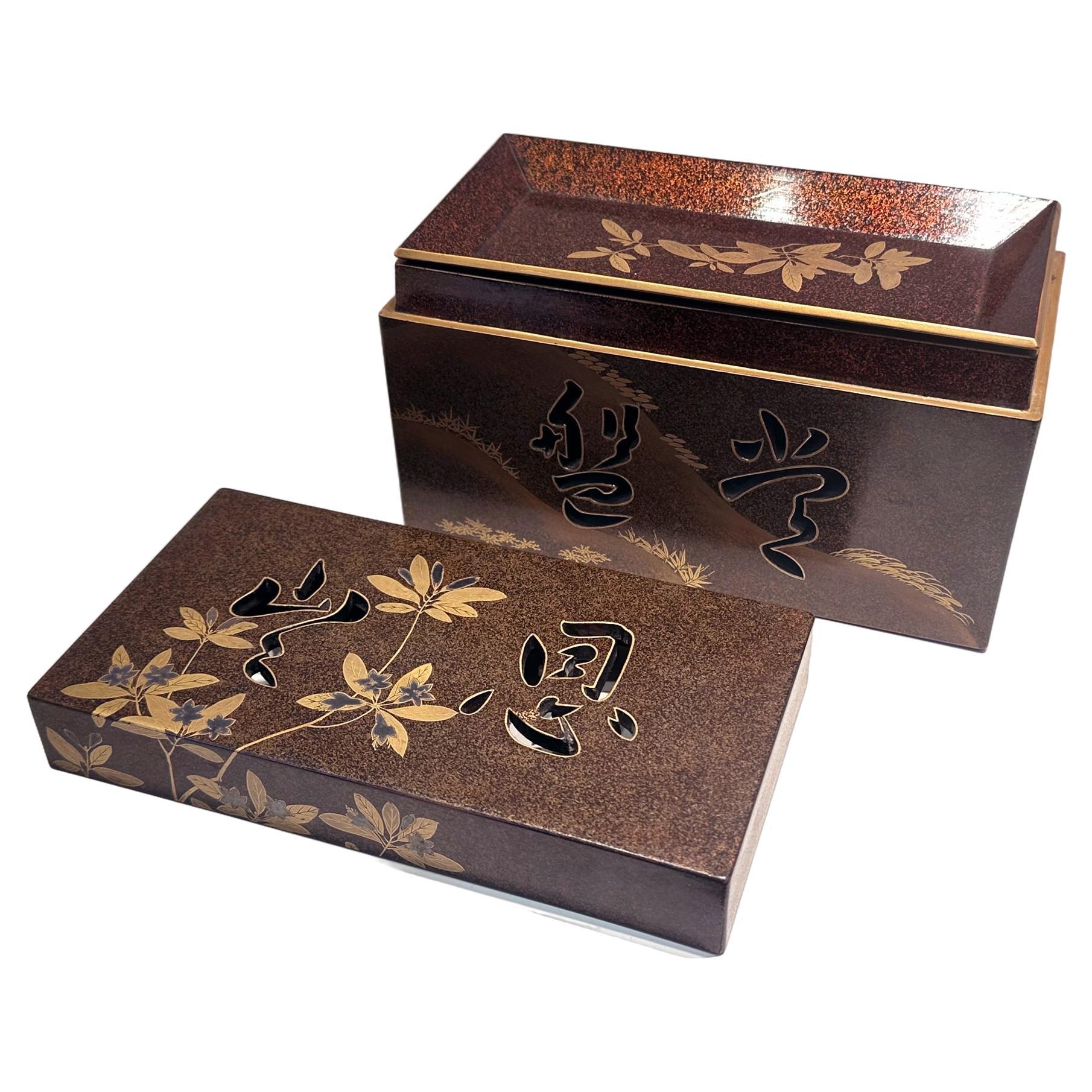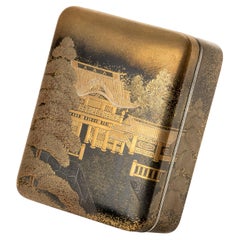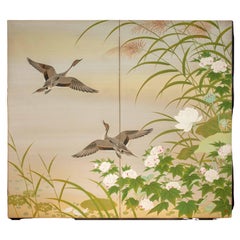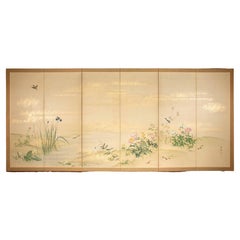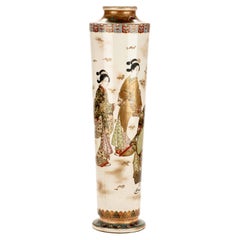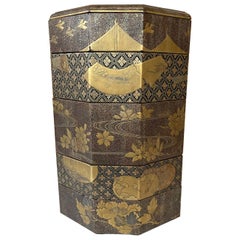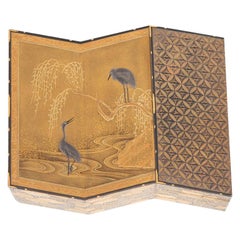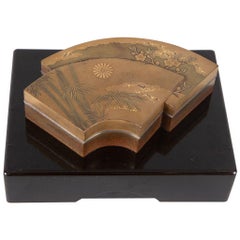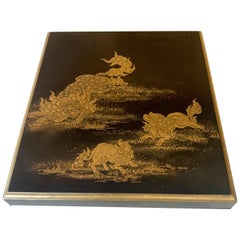Items Similar to Kogo box in maki-è lacquer depicting a naturalistic scene
Want more images or videos?
Request additional images or videos from the seller
1 of 8
Kogo box in maki-è lacquer depicting a naturalistic scene
About the Item
Kogo box in maki-è lacquer, with a domed lid depicting a naturalistic scene. The gold decoration depicts the Japanese pine, known as Matsu, and a typical house with a thatched roof along the banks of a waterway.
Sold with its tomobako.
Origin: Japan
Period: Meiji end of 19th century.
Dimensions: 3.5 x 7 x 8 cm.
State of conservation: Very good
- Dimensions:Height: 1.38 in (3.5 cm)Width: 2.76 in (7 cm)Depth: 3.15 in (8 cm)
- Style:Japonisme (In the Style Of)
- Materials and Techniques:Lacquer,Lacquered
- Place of Origin:
- Period:
- Date of Manufacture:Meiji late 19th century
- Condition:
- Seller Location:Milano, IT
- Reference Number:1stDibs: LU9162239391502
About the Seller
No Reviews Yet
Recognized Seller
These prestigious sellers are industry leaders and represent the highest echelon for item quality and design.
Established in 2012
1stDibs seller since 2023
Typical response time: 1 hour
- ShippingRetrieving quote...Shipping from: Milano, Italy
- Return Policy
Authenticity Guarantee
In the unlikely event there’s an issue with an item’s authenticity, contact us within 1 year for a full refund. DetailsMoney-Back Guarantee
If your item is not as described, is damaged in transit, or does not arrive, contact us within 7 days for a full refund. Details24-Hour Cancellation
You have a 24-hour grace period in which to reconsider your purchase, with no questions asked.Vetted Professional Sellers
Our world-class sellers must adhere to strict standards for service and quality, maintaining the integrity of our listings.Price-Match Guarantee
If you find that a seller listed the same item for a lower price elsewhere, we’ll match it.Trusted Global Delivery
Our best-in-class carrier network provides specialized shipping options worldwide, including custom delivery.More From This Seller
View AllA Maki-e Lacquer Tebako Box Embellished With Gold Decorations
Located in Milano, IT
Tebako lacquer maki-e box embellished with gold decorations depicting a Buddhist temple surrounded by majestic Matsu pines. The interior and base are finished in nashiji lacquer. The...
Category
Antique 19th Century Japanese Lacquer
Materials
Lacquer
A Two-panel Screen Painted On Paper Depicting A Naturalistic Scene
Located in Milano, IT
Two-panel screen painted on paper, depicting a naturalistic scene with two pintail ducks in flight over a pond. In the foreground, lotus plants and peonies emerge from leaves and ste...
Category
Vintage 1920s Japanese Paintings and Screens
Materials
Paper
A six-panel folding screen depicting a floral and a naturalistic scene
Located in Milano, IT
Six-panel folding screen, made on paper decorated with pigments and gold dust, depicting a floral and naturalistic scene. Among the flowers are blue irises, white lilies, and pink an...
Category
Antique Mid-19th Century Japanese Paintings and Screens
Materials
Paper
A Large Satsuma Vase Depicting A Scene Of Daily Life
Located in Milano, IT
Large cylindrical Satsuma vase, decorated with polychrome enamels and pure gold, depicting a scene of daily life with three geishas and a samurai on a festive day.
Signed ‘Seizan zō...
Category
Antique Late 19th Century Japanese Japonisme Ceramics
Materials
Ceramic
A japanese folding screen decorated with a naturalistic scene
Located in Milano, IT
Byōbu folding screen, 屏風, six panels with gold leaf background, decorated with a naturalistic scene of elegant simplicity, depicting flowers and a stream.
The composition depicts a s...
Category
Antique Late 19th Century Japanese Paintings and Screens
Materials
Paper
A Satsuma Vase Depicting A Group Of Carp Swimming In A Stream
Located in Milano, IT
A Satsuma vase depicting a group of carp swimming in a stream. The scene is depicted from a shore perspective, where partially submerged tree trunks emerge and delicate flowers bloom...
Category
Antique Late 19th Century Japanese Japonisme Ceramics
Materials
Ceramic
You May Also Like
Japanese Maki-e Lacquer Stack Box Jubako
Located in Atlanta, GA
An antique jubako (stack boxes) with five tiers in an elongated octagon shape circa 19th century (end of Edo or beginning of Meiji period). jubako was traditionally used to store and...
Category
Antique 19th Century Japanese Japonisme Lacquer
Materials
Wood, Lacquer
Fine Lacquer Kogo 'Incense Box'
Located in Hudson, NY
Exquisitely detailed incense storage box in gold lacquer with silver and gold overlays of a folded screen with heron and willow design. Flowers and...
Category
Antique Late 19th Century Japanese Meiji Lacquer
Materials
Lacquer
Japanese Lacquer Kogo 'Incense Box'
Located in Hudson, NY
Late Edo (1614 - 1868) period incense storage box in stacked, double fan design. Fans have bamboo and plum design with a chrysanthemum crest. Silve...
Category
Antique Mid-19th Century Japanese Edo Lacquer
Materials
Gold
Japanese Lacquer Box with Fine Maki-e Decoration Meiji Period
Located in Atlanta, GA
A lacquered wood box with lid from Japan circa 19th century Meiji Period. The finely decorated box was used to store paper slips and small documents on the desk. It is overall finished with black lacquer (kuro) with sparse Mura-Nashiji effect outside and on the top surface of the lid, there are three Komainu, (sometimes known as Shishi or Japanese lions) frolicking and forming a circle in lively motion. Komainu are auspicious animals in Japanese cultures in both Shinto and Buddhism tradition. Originally from China, these animals symbolizes guardians to ward off evil spirits. Hiramaki-e was used in combination with carving and combing to render the lions with various surface textures. A gilt border with an slight angle was given to the lid and even the thin band is decorated with miniature floral scrolls. The interior of the box was finished in a dense nashiji. Underneath the lid, a cluster of peonies open lavishly by two gentle mounts. Takamaki-e (high relief) in both gold and silver were...
Category
Antique Late 19th Century Japanese Japonisme Lacquer
Materials
Wood, Lacquer
An Antique Japanese Lacquer Maki-e Tray
Located in Atlanta, GA
A fan shape black lacquer tray from Japan circa 1910-30s, late Meiji to early Showa era. Elaborated decorated with a bundle of yomogi blossom in a very fine Maki-e technique using both gold and silver powders. There is a Japanese symbol on the top left, which represents yomogiu, stemming from yomogi (蓬), a wild plant that belongs to the chrysanthemum family and widely grown in Japan.
This name yomogui is from a scene in the Tale of Genji...
Category
Early 20th Century Japanese Japonisme Lacquer
Materials
Lacquer
Japanese Maki-e Lacquer Tray Box with Cutout Design
Located in Atlanta, GA
A Japanese lacquer box with lid and an inner tray decorated with Maki-e on a dense nashiji background. The fine box was likely made circa 1920-30s...
Category
Vintage 1920s Japanese Taisho Lacquer
Materials
Wood, Lacquer
Recently Viewed
View AllMore Ways To Browse
Naturalistic Furniture
Japanese Roof
Asian Roof
Nagasaki Export Lacquer
Japanese Hat Box
Japanese Lacquer Comb
Japanese Ojime
Japanese Water Droppers
Kimono Tray
18th Century Cinnabar
Asian Sewing Box
Lacquer Offering Bowl
Namban Lacquer
Japanese Makie Lacquer
Japanese Suzuribako
Antique Chinese Mother Of Pearl Gaming Counters
Inro Ojime
Cinnabar Plate
